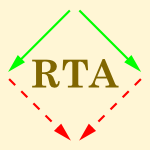178 papers:
 CHI-2015-TsugawaKKNIO #process #twitter
CHI-2015-TsugawaKKNIO #process #twitter- Recognizing Depression from Twitter Activity (ST, YK, FK, KN, YI, HO), pp. 3187–3196.
 HCI-IT-2015-HaescherTMBUK #multi #named #process #smarttech
HCI-IT-2015-HaescherTMBUK #multi #named #process #smarttech- aHead: Considering the Head Position in a Multi-sensory Setup of Wearables to Recognize Everyday Activities with Intelligent Sensor Fusions (MH, JT, DJCM, GB, BU, TK), pp. 741–752.
 ECIR-2015-VieiraSCM #self #web
ECIR-2015-VieiraSCM #self #web- A Self-training CRF Method for Recognizing Product Model Mentions in Web Forums (HSV, ASdS, MC, ESdM), pp. 257–264.
 HT-2014-ChelaruHNS #communication #network
HT-2014-ChelaruHNS #communication #network- Recognizing skill networks and their specific communication and connection practices (SC, EH, KDN, PS), pp. 13–23.
 CIAA-2014-BiasiY #automaton
CIAA-2014-BiasiY #automaton- Unary Languages Recognized by Two-Way One-Counter Automata (MDB, AY), pp. 148–161.
 CHI-2014-LuFL #gesture #using
CHI-2014-LuFL #gesture #using- Gesture script: recognizing gestures and their structure using rendering scripts and interactively trained parts (HL, JF, YL), pp. 1685–1694.
 CHI-2014-MorrisSGK #named #smarttech #using
CHI-2014-MorrisSGK #named #smarttech #using- RecoFit: using a wearable sensor to find, recognize, and count repetitive exercises (DM, TSS, AG, IK), pp. 3225–3234.
 CSCW-2014-MatthiesenBP #development #how #quote
CSCW-2014-MatthiesenBP #development #how #quote- “Figure out how to code with the hands of others”: recognizing cultural blind spots in global software development (SM, PB, LMP), pp. 1107–1119.
 DUXU-DI-2014-ChangH
DUXU-DI-2014-ChangH- Effect of Perception-Compatibility, Learning-Factor, and Symbol-Carrier on Single LED Symbol System Recognizing (CCC, TKPH), pp. 417–424.
 CIKM-2014-ZhangL #twitter
CIKM-2014-ZhangL #twitter- Recognizing Humor on Twitter (RZ, NL), pp. 889–898.
 ICPR-2014-AhmetovicBGM #locality #named #performance #precise
ICPR-2014-AhmetovicBGM #locality #named #performance #precise- ZebraRecognizer: Efficient and Precise Localization of Pedestrian Crossings (DA, CB, AG, SM), pp. 2566–2571.
 ICPR-2014-HusainDT #random #using
ICPR-2014-HusainDT #random #using- Recognizing Point Clouds Using Conditional Random Fields (FH, BD, CT), pp. 4257–4262.
 ICPR-2014-KeceliC #approach #multimodal #using
ICPR-2014-KeceliC #approach #multimodal #using- A Multimodal Approach for Recognizing Human Actions Using Depth Information (ASK, ABC), pp. 421–426.
 SIGIR-2014-PengS00W #smarttech
SIGIR-2014-PengS00W #smarttech- The knowing camera 2: recognizing and annotating places-of-interest in smartphone photos (PP, LS, KC, GC, SW), pp. 707–716.
 ICDAR-2013-GoelMAJ #word
ICDAR-2013-GoelMAJ #word- Whole is Greater than Sum of Parts: Recognizing Scene Text Words (VG, AM, KA, CVJ), pp. 398–402.
 ICDAR-2013-KimuraHUIOK
ICDAR-2013-KimuraHUIOK- The Reading-Life Log — Technologies to Recognize Texts That We Read (TK, RH, SU, MI, SO, KK), pp. 91–95.
 ICDAR-2013-SurintaSW #comparison
ICDAR-2013-SurintaSW #comparison- A Comparison of Feature and Pixel-Based Methods for Recognizing Handwritten Bangla Digits (OS, LS, MW), pp. 165–169.
 HCI-III-2013-KimKAPW #analysis #artificial reality #social
HCI-III-2013-KimKAPW #analysis #artificial reality #social- Brain Function Connectivity Analysis for Recognizing Different Relation of Social Emotion in Virtual Reality (JK, DK, SA, SP, MCW), pp. 441–447.
 SIGIR-2013-PengS00W #smarttech
SIGIR-2013-PengS00W #smarttech- The knowing camera: recognizing places-of-interest in smartphone photos (PP, LS, KC, GC, SW), pp. 969–972.
 ICSE-2013-SnipesANM #developer #performance #towards
ICSE-2013-SnipesANM #developer #performance #towards- Towards recognizing and rewarding efficient developer work patterns (WS, VA, ARN, ERMH), pp. 1277–1280.
 DLT-J-2011-ZhengQL12 #automaton #finite #quantum
DLT-J-2011-ZhengQL12 #automaton #finite #quantum- Some Languages Recognized by Two-Way Finite Automata with Quantum and Classical States (SZ, DQ, LL), pp. 1117–1130.
 LATA-2012-DubeLT #regular expression
LATA-2012-DubeLT #regular expression- Conservative Groupoids Recognize Only Regular Languages (DD, ML, PT), pp. 216–227.
 CHI-2012-RichterHB #named
CHI-2012-RichterHB #named- Bootstrapper: recognizing tabletop users by their shoes (SR, CH, PB), pp. 1249–1252.
 CSCW-2012-PoltrockHPM
CSCW-2012-PoltrockHPM- Recognizing team context during simulated missions (SEP, MJH, SRP, PM), pp. 197–206.
 ICPR-2012-AbeOD #image #learning #rank
ICPR-2012-AbeOD #image #learning #rank- Recognizing surface qualities from natural images based on learning to rank (TA, TO, KD), pp. 3712–3715.
 ICPR-2012-AhmedA #gesture #modelling #using
ICPR-2012-AhmedA #gesture #modelling #using- Flow Modeling and skin-based Gaussian pruning to recognize gestural actions using HMM (ORA, AAH), pp. 3488–3491.
 ICPR-2012-JiangDPL #word
ICPR-2012-JiangDPL #word- Analyzing the information entropy of states to optimize the number of states in an HMM-based off-line handwritten Arabic word recognizer (ZJ, XD, LP, CL), pp. 697–700.
 ICPR-2012-ZhangSSLWTBC #category theory #image #kernel
ICPR-2012-ZhangSSLWTBC #category theory #image #kernel- Spatial graphlet matching kernel for recognizing aerial image categories (LZ, MS, LS, XL, YW, DT, JB, CC), pp. 2813–2816.
 ICDAR-2011-PanZSN #invariant #using
ICDAR-2011-PanZSN #invariant #using- Recognizing Characters with Severe Perspective Distortion Using Hash Tables and Perspective Invariants (PP, YZ, JS, SN), pp. 548–552.
 ICDAR-2011-SuCL #novel
ICDAR-2011-SuCL #novel- Recognizing Text Elements for SVG Comic Compression and Its Novel Applications (CYS, RIC, JCL), pp. 1329–1333.
 ICDAR-2011-ZhuGN #design #online #recognition
ICDAR-2011-ZhuGN #design #online #recognition- Objective Function Design for MCE-Based Combination of On-line and Off-line Character Recognizers for On-line Handwritten Japanese Text Recognition (BZ, JG, MN), pp. 594–598.
 ICDAR-2011-ZhuN11a #classification #online #recognition #scalability
ICDAR-2011-ZhuN11a #classification #online #recognition #scalability- A Coarse Classifier Construction Method from a Large Number of Basic Recognizers for On-line Recognition of Handwritten Japanese Characters (BZ, MN), pp. 1090–1094.
 LATA-2011-BerglundBH
LATA-2011-BerglundBH- Recognizing Shuffled Languages (MB, HB, JH), pp. 142–154.
 HCI-ITE-2011-BoulabiarBPC #interactive #low cost
HCI-ITE-2011-BoulabiarBPC #interactive #low cost- A Low-Cost Natural User Interaction Based on a Camera Hand-Gestures Recognizer (MIB, TB, FP, GC), pp. 214–221.
 VLDB-2010-ZhangDI
VLDB-2010-ZhangDI- Recognizing Patterns in Streams with Imprecise Timestamps (HZ, YD, NI), pp. 244–255.
 CSMR-2010-MadaniGPGA #identifier #recognition #source code #speech #using #word
CSMR-2010-MadaniGPGA #identifier #recognition #source code #speech #using #word- Recognizing Words from Source Code Identifiers Using Speech Recognition Techniques (NM, LG, MDP, YGG, GA), pp. 68–77.
 ICPC-2010-Taherkhani #algorithm #classification #sorting
ICPC-2010-Taherkhani #algorithm #classification #sorting- Recognizing Sorting Algorithms with the C4.5 Decision Tree Classifier (AT), pp. 72–75.
 STOC-2010-MagniezMN #streaming
STOC-2010-MagniezMN #streaming- Recognizing well-parenthesized expressions in the streaming model (FM, CM, AN), pp. 261–270.
 CHI-2010-LankST #documentation #fault #injection #using
CHI-2010-LankST #documentation #fault #injection #using- Estimating residual error rate in recognized handwritten documents using artificial error injection (EL, RS, MAT), pp. 1–4.
 CHI-2010-Li #gesture #named #performance
CHI-2010-Li #gesture #named #performance- Protractor: a fast and accurate gesture recognizer (YL), pp. 2169–2172.
 ICPR-2010-BaysalKD #using
ICPR-2010-BaysalKD #using- Recognizing Human Actions Using Key Poses (SB, MCK, PD), pp. 1727–1730.
 ICPR-2010-ChiangK #approach
ICPR-2010-ChiangK #approach- An Approach for Recognizing Text Labels in Raster Maps (YYC, CAK), pp. 3199–3202.
 ICPR-2010-DengLGY
ICPR-2010-DengLGY- Recognizing Dance Motions with Segmental SVD (LD, HL, NG, YY), pp. 1537–1540.
 ICPR-2010-MehtaSJBJ
ICPR-2010-MehtaSJBJ- Recognizing Sign Language from Brain Imaging (NAM, TS, MMJ, KOB, GAJ), pp. 3842–3845.
 ICPR-2010-WangH10a #case study #classification #design #multi #prototype #using
ICPR-2010-WangH10a #case study #classification #design #multi #prototype #using- A Study of Designing Compact Recognizers of Handwritten Chinese Characters Using Multiple-Prototype Based Classifiers (YW, QH), pp. 1872–1875.
 ICPR-2010-YoonSL #3d
ICPR-2010-YoonSL #3d- Recognizing 3D Objects with 3D Information from Stereo Vision (KJY, MGS, JHL), pp. 4020–4023.
 SAC-2010-GongWWLZY #using
SAC-2010-GongWWLZY #using- Recognizing affect from non-stylized body motion using shape of Gaussian descriptors (LG, TW, CW, FL, FZ, XY), pp. 1203–1206.
 ICDAR-2009-ChangHZ #framework
ICDAR-2009-ChangHZ #framework- A Unified Framework for Recognizing Handwritten Chemical Expressions (MC, SH, DZ), pp. 1345–1349.
 ICDAR-2009-HasnatCK #open source
ICDAR-2009-HasnatCK #open source- An Open Source Tesseract Based Optical Character Recognizer for Bangla Script (MAH, MRC, MK), pp. 671–675.
 ICDAR-2009-OroR #approach #documentation #named
ICDAR-2009-OroR #approach #documentation #named- PDF-TREX: An Approach for Recognizing and Extracting Tables from PDF Documents (EO, MR), pp. 906–910.
 ICDAR-2009-SharmaKS #online #recognition #word
ICDAR-2009-SharmaKS #online #recognition #word- Rearrangement of Recognized Strokes in Online Handwritten Gurmukhi Words Recognition (AS, RK, RKS), pp. 1241–1245.
 ICDAR-2009-Takasu #approximate #estimation #similarity
ICDAR-2009-Takasu #approximate #estimation #similarity- Bayesian Similarity Model Estimation for Approximate Recognized Text Search (AT), pp. 611–615.
 ICDAR-2009-TewariN #adaptation #learning
ICDAR-2009-TewariN #adaptation #learning- Learning and Adaptation for Improving Handwritten Character Recognizers (NCT, AMN), pp. 86–90.
 ICDAR-2009-WangH #classification #design #fault #modelling #parametricity #precise #using
ICDAR-2009-WangH #classification #design #fault #modelling #parametricity #precise #using- Design Compact Recognizers of Handwritten Chinese Characters Using Precision Constrained Gaussian Models, Minimum Classification Error Training and Parameter Compression (YW, QH), pp. 36–40.
 HCI-AUII-2009-WoolfDACBM #student
HCI-AUII-2009-WoolfDACBM #student- Recognizing and Responding to Student Affect (BPW, TD, IA, DGC, WB, KM), pp. 713–722.
 HIMI-DIE-2009-YamaguchiNKN #evaluation
HIMI-DIE-2009-YamaguchiNKN #evaluation- Evaluation for Adjustment Method of Vehicle’s Location by Recognizing Crosswalks (YY, TN, HK, SN), pp. 648–656.
 ICEIS-J-2009-BogdanovychBS #3d
ICEIS-J-2009-BogdanovychBS #3d- Recognizing Customers’ Mood in 3D Shopping Malls Based on the Trajectories of Their Avatars (AB, MB, SJS), pp. 745–757.
 ASE-2008-MaderGP #automation #development #maintenance #modelling #process #traceability
ASE-2008-MaderGP #automation #development #maintenance #modelling #process #traceability- Enabling Automated Traceability Maintenance by Recognizing Development Activities Applied to Models (PM, OG, IP), pp. 49–58.
 ICALP-B-2008-BoigelotBB #automaton #finite #multi #on the #set
ICALP-B-2008-BoigelotBB #automaton #finite #multi #on the #set- On the Sets of Real Numbers Recognized by Finite Automata in Multiple Bases (BB, JB, VB), pp. 112–123.
 ICEIS-ISAS2-2008-KansoESS #architecture #named #towards
ICEIS-ISAS2-2008-KansoESS #architecture #named #towards- RICAD: Towards an Architecture for Recognizing Author’s Targets (HK, AE, CSD, ST), pp. 374–379.
 CIKM-2008-FriedlandA #retrieval
CIKM-2008-FriedlandA #retrieval- Joke retrieval: recognizing the same joke told differently (LF, JA), pp. 883–892.
 ICPR-2008-LuoHMJY #image
ICPR-2008-LuoHMJY #image- Recognizing picture-taking environment from satellite images: A feasibility study (JL, WH, DM, DJ, JY), pp. 1–4.
 ICPR-2008-SuZHL
ICPR-2008-SuZHL- Segmentation-free recognizer based on enhanced four plane feature for realistic Chinese handwriting (THS, TZ, HJH, CLL), pp. 1–4.
 HT-2007-DoerrDD #behaviour #traversal #web
HT-2007-DoerrDD #behaviour #traversal #web- Simplifying web traversals by recognizing behavior patterns (CD, DvD, AD), pp. 105–114.
 ICDAR-2007-CostagliolaDR #diagrams #grammarware #sketching #using
ICDAR-2007-CostagliolaDR #diagrams #grammarware #sketching #using- Using Grammar-Based Recognizers for Symbol Completion in Diagrammatic Sketches (GC, VD, MR), pp. 1078–1082.
 ICDAR-2007-MajumdarC #multi
ICDAR-2007-MajumdarC #multi- Curvelet-Based Multi SVM Recognizer for Offline Handwritten Bangla: A Major Indian Script (AM, BBC), pp. 491–495.
 ICDAR-2007-MasSLL #algorithm #diagrams #incremental #online #parsing #sketching
ICDAR-2007-MasSLL #algorithm #diagrams #incremental #online #parsing #sketching- An Incremental On-line Parsing Algorithm for Recognizing Sketching Diagrams (JM, GS, JL, BL), pp. 452–456.
 ICDAR-2007-PatiR #documentation #multi
ICDAR-2007-PatiR #documentation #multi- A Blind Indic Script Recognizer for Multi-script Documents (PP, AR), pp. 1248–1252.
 ICDAR-2007-ShimanukiKW #design
ICDAR-2007-ShimanukiKW #design- Extracting Features of Paper-made Objects Recognized from Origami Books Based on Design Knowledge (HS, JK, TW), pp. 1203–1207.
 ICDAR-2007-SuZHZ
ICDAR-2007-SuZHZ- HMM-Based Recognizer with Segmentation-free Strategy for Unconstrained Chinese Handwritten Text (THS, TWZ, HJH, YZ), pp. 133–137.
 ICPC-2007-KothariDSM #comprehension #convergence #evolution #implementation
ICPC-2007-KothariDSM #comprehension #convergence #evolution #implementation- Reducing Program Comprehension Effort in Evolving Software by Recognizing Feature Implementation Convergence (JK, TD, AS, SM), pp. 17–26.
 HCI-MIE-2007-KimL07c #design #user interface
HCI-MIE-2007-KimL07c #design #user interface- Recognizing Cultural Diversity in Digital Television User Interface Design (JK, SL), pp. 902–908.
 ECIR-2007-SandersonS #documentation
ECIR-2007-SandersonS #documentation- Search of Spoken Documents Retrieves Well Recognized Transcripts (MS, XMS), pp. 505–516.
 ESEC-FSE-2007-NgoT #detection #scalability
ESEC-FSE-2007-NgoT #detection #scalability- Detecting large number of infeasible paths through recognizing their patterns (MNN, HBKT), pp. 215–224.
 ICPR-v1-2006-DuCXL #interactive #network #process #using
ICPR-v1-2006-DuCXL #interactive #network #process #using- Recognizing Interaction Activities using Dynamic Bayesian Network (YD, FC, WX, YL), pp. 618–621.
 ICPR-v1-2006-SkelleyFSH #database
ICPR-v1-2006-SkelleyFSH #database- Recognizing Expressions in a New Database Containing Played and Natural Expressions (JS, RF, AS, BH), pp. 1220–1225.
 ICPR-v1-2006-ZhangGZ #database #orthogonal
ICPR-v1-2006-ZhangGZ #database #orthogonal- Recognizing Rotated Faces from Two Orthogonal Views in Mugshot Databases (XZ, YG, BZ), pp. 195–198.
 ICPR-v2-2006-AndelicSKK #hybrid #kernel #modelling #speech #using
ICPR-v2-2006-AndelicSKK #hybrid #kernel #modelling #speech #using- A Hybrid HMM-Based Speech Recognizer Using Kernel-Based Discriminants as Acoustic Models (EA, MS, MK, SEK), pp. 1158–1161.
 ICPR-v2-2006-KanaujiaM
ICPR-v2-2006-KanaujiaM- Recognizing Facial Expressions by Tracking Feature Shapes (AK, DNM), pp. 33–38.
 ICPR-v3-2006-TranP #pervasive #probability #process #representation
ICPR-v3-2006-TranP #pervasive #probability #process #representation- A probabilistic model with parsinomious representation for sensor fusion in recognizing activity in pervasive environment (DTT, DQP), pp. 168–172.
 ICDAR-2005-CostagliolaDR #diagrams #sketching
ICDAR-2005-CostagliolaDR #diagrams #sketching- Sketch Grammars: A Formalism for Describing and Recognizing Diagrammatic Sketch Languages (GC, VD, MR), pp. 1226–1231.
 ICDAR-2005-HottaTSN #recognition #word
ICDAR-2005-HottaTSN #recognition #word- Accuracy Improvement for Handwritten Japanese Word Recognition by Combination of Character and Word Recognizer (YH, HT, MS, SN), pp. 685–689.
 ICDAR-2005-RinglstetterSML #fault
ICDAR-2005-RinglstetterSML #fault- The Same is Not The same — Post Correction of Alphabet Confusion Errors in Mixed-Alphabet OCR Recognation (CR, KUS, SM, KL), pp. 406–410.
 ICDAR-2005-YangYS
ICDAR-2005-YangYS- A New Method of Recognizing Chinese Fonts (ZY, LY, CYS), pp. 962–966.
 STOC-2005-BojanczykC #automaton #regular expression
STOC-2005-BojanczykC #automaton #regular expression- Tree-walking automata do not recognize all regular languages (MB, TC), pp. 234–243.
 ICALP-2005-BeaudryLT #regular expression
ICALP-2005-BeaudryLT #regular expression- Groupoids That Recognize Only Regular Languages (MB, FL, DT), pp. 421–433.
 ICSE-2005-BlahaMSSV #ambiguity #design #multi #student
ICSE-2005-BlahaMSSV #ambiguity #design #multi #student- Do students recognize ambiguity in software design? a multi-national, multi-institutional report (KB, AEM, DS, BS, TV), pp. 615–616.
 LICS-2005-BaierG #automaton #probability #regular expression
LICS-2005-BaierG #automaton #probability #regular expression- Recognizing ω-regular Languages with Probabilistic Automata (CB, MG), pp. 137–146.
 DRR-2004-WenD #documentation #framework #multi #segmentation
DRR-2004-WenD #documentation #framework #multi #segmentation- A general framework for multicharacter segmentation and its application in recognizing multilingual Asian documents (DW, XD), pp. 147–154.
 ICPR-v1-2004-LeL #image #markov #modelling #using
ICPR-v1-2004-LeL #image #markov #modelling #using- Recognizing Frontal Face Images Using Hidden Markov Models with One Training Image per Person (HSL, HL), pp. 318–321.
 ICPR-v1-2004-LiuLJ #approach
ICPR-v1-2004-LiuLJ #approach- A Structural Approach to Recognizing Incomplete Graphic Objects (YL, WL, CJ), pp. 371–375.
 ICPR-v2-2004-HaseSTS #multi #robust
ICPR-v2-2004-HaseSTS #multi #robust- A Robust Method of Recognizing Multi-font Rotated Characters (HH, TS, ST, CYS), pp. 363–366.
 ICPR-v2-2004-SchlapbachB #identification #using
ICPR-v2-2004-SchlapbachB #identification #using- Off-line Handwriting Identification Using HMM Based Recognizers (AS, HB), pp. 654–658.
 ICPR-v3-2004-HardingE #fourier #gesture #using
ICPR-v3-2004-HardingE #fourier #gesture #using- Recognizing Hand Gesture using Fourier Descriptors (PRGH, TJE), pp. 286–289.
 ICPR-v3-2004-KimJLK #how #novel #visual notation
ICPR-v3-2004-KimJLK #how #novel #visual notation- How Human Visual Systems Recognize Objects — A Novel Computational Model (SK, GjJ, WHL, ISK), pp. 61–64.
 ICPR-v3-2004-LuoKGHSRH #learning #multi
ICPR-v3-2004-LuoKGHSRH #learning #multi- Active Learning to Recognize Multiple Types of Plankton (TL, KK, DBG, LOH, SS, AR, TH), pp. 478–481.
 ICPR-v3-2004-SchuldtLC #approach
ICPR-v3-2004-SchuldtLC #approach- Recognizing Human Actions: A Local SVM Approach (CS, IL, BC), pp. 32–36.
 SIGIR-2004-LiuLYM #approach #documentation #effectiveness #retrieval
SIGIR-2004-LiuLYM #approach #documentation #effectiveness #retrieval- An effective approach to document retrieval via utilizing WordNet and recognizing phrases (SL, FL, CTY, WM), pp. 266–272.
 ICDAR-2003-ChoiCK #generative #network #online
ICDAR-2003-ChoiCK #generative #network #online- Generation of Handwritten Characters with Bayesian network based On-line Handwriting Recognizers (HIC, SJC, JHK), p. 995–?.
 ICDAR-2003-GunterB #optimisation #word
ICDAR-2003-GunterB #optimisation #word- Optimizing the Number of States, Training Iterations and Gaussians in an HMM-based Handwritten Word Recognizer (SG, HB), pp. 472–476.
 ICDAR-2003-KorkmazKAA
ICDAR-2003-KorkmazKAA- A Character Recognizer for Turkish Language (SUK, GK, YA, VA), pp. 1238–1241.
 ICDAR-2003-TomaiS #using
ICDAR-2003-TomaiS #using- Combination of Type III Digit Recognizers using the Dempster-Shafer Theory of Evidence (CIT, SNS), pp. 854–858.
 ICML-2003-Jaeger #classification #concept #probability
ICML-2003-Jaeger #classification #concept #probability- Probabilistic Classifiers and the Concepts They Recognize (MJ), pp. 266–273.
 SAC-2003-ZhuHY #network #using #web
SAC-2003-ZhuHY #network #using #web- Recognizing the Relations between Web Pages Using Artificial Neural Network (XZ, SH, YY), pp. 1217–1221.
 RTA-2003-OhsakiST
RTA-2003-OhsakiST- Recognizing Boolean Closed A-Tree Languages with Membership Conditional Rewriting Mechanism (HO, HS, TT), pp. 483–498.
 DocEng-2002-TubbsE
DocEng-2002-TubbsE- Recognizing records from the extracted cells of microfilm tables (KMT, DWE), pp. 149–156.
 ITiCSE-2002-HabermanA #recursion #student #why
ITiCSE-2002-HabermanA #recursion #student #why- The case of base cases: why are they so difficult to recognize? student difficulties with recursion (BH, HA), pp. 84–88.
 STOC-2002-SchaeferSS #graph #string
STOC-2002-SchaeferSS #graph #string- Recognizing string graphs in NP (MS, ES, DS), pp. 1–6.
 DLT-2002-AnanichevCV #algorithm #automaton #word
DLT-2002-AnanichevCV #algorithm #automaton #word- An Inverse Automata Algorithm for Recognizing 2-Collapsing Words (DSA, AC, MVV), pp. 270–282.
 ICML-2002-MeyerB #scalability #speech #towards
ICML-2002-MeyerB #scalability #speech #towards- Towards “Large Margin” Speech Recognizers by Boosting and Discriminative Training (CM, PB), pp. 419–426.
 ICPR-v1-2002-BingPL
ICPR-v1-2002-BingPL- Recognizing Faces with Expressions: Within-class Space and Between-class Space (YB, CP, JL), pp. 139–142.
 ICPR-v1-2002-FrimanBLTK #approach #network
ICPR-v1-2002-FrimanBLTK #approach #network- Recognizing Emphysema- A Neural Network Approach (OF, MB, ML, UT, HK), pp. 512–515.
 ICPR-v1-2002-RahmanNI #behaviour #using
ICPR-v1-2002-RahmanNI #behaviour #using- Recognizing Human Behavior Using Universal Eigenspace (MMR, KN, SI), pp. 295–298.
 ICPR-v1-2002-WerghiX #3d
ICPR-v1-2002-WerghiX #3d- Wavelet Moments for Recognizing Human Body Posture from 3D (NW, YX), pp. 319–322.
 ICPR-v3-2002-KangL #evaluation #multi
ICPR-v3-2002-KangL #evaluation #multi- Evaluation on Selection Criteria of Multiple Numeral Recognizers with the Fixed Number of Recognizers (HJK, SWL), pp. 403–406.
 ICPR-v3-2002-Lucas #deployment #evaluation
ICPR-v3-2002-Lucas #deployment #evaluation- Web-Based Evaluation and Deployment of Pattern Recognizers (SML), pp. 419–422.
 ICPR-v3-2002-XueG #classification #performance #predict #word
ICPR-v3-2002-XueG #classification #performance #predict #word- Performance Prediction for Handwritten Word Recognizers and Its Application to Classifier Combination (HX, VG), pp. 241–244.
 ICPR-v3-2002-ZhouK #representation #set #using
ICPR-v3-2002-ZhouK #representation #set #using- Representing and Recognizing Complete Set of Geons Using Extended Superquadrics (LZ, CK), pp. 713–718.
 ICSE-2002-ElssamadisyS #programming #smell
ICSE-2002-ElssamadisyS #programming #smell- Recognizing and responding to “bad smells” in extreme programming (AE, GS), pp. 617–622.
 ICDAR-2001-BelliliGG #hybrid
ICDAR-2001-BelliliGG #hybrid- An Hybrid MLP-SVM Handwritten Digit Recognizer (AB, MG, PG), pp. 28–33.
 ICDAR-2001-BrittoSBS #string
ICDAR-2001-BrittoSBS #string- A Two-Stage HMM-Based System for Recognizing Handwritten Numeral Strings (AdSBJ, RS, FB, CYS), pp. 396–400.
 ICDAR-2001-KangL #classification #multi
ICDAR-2001-KangL #classification #multi- Experimental Results on the Construction of Multiple Classifiers Recognizing Handwritten Numerals (HJK, SWL), pp. 1026–1030.
 ICDAR-2001-OliveiraSBS #composition
ICDAR-2001-OliveiraSBS #composition- A Modular System to Recognize Numerical Amounts on Brazilian Bank Checks (LESdO, RS, FB, CYS), pp. 389–395.
 ICDAR-2001-QuanKTTHN #documentation #image
ICDAR-2001-QuanKTTHN #documentation #image- A System for Recognizing Vietnamese Document Images Based on HMM and Linguistics (VHQ, HK, PNT, LTT, NDHH, AHN), pp. 627–630.
 ICDAR-2001-SanchezL #graph grammar
ICDAR-2001-SanchezL #graph grammar- A Graph Grammar to Recognize Textured Symbols (GS, JL), pp. 465–469.
 ICALP-2001-FriedmanG #random #satisfiability
ICALP-2001-FriedmanG #random #satisfiability- Recognizing More Unsatisfiable Random 3-SAT Instances Efficiently (JF, AG), pp. 310–321.
 CSCW-2000-GuzdialRK
CSCW-2000-GuzdialRK- Recognizing and supporting roles in CSCW (MG, JR, BK), pp. 261–268.
 ICPR-v1-2000-BesshoIY #detection #using
ICPR-v1-2000-BesshoIY #detection #using- Detecting Human Face and Recognizing Facial Expressions Using Potential Net (HB, YI, MY), pp. 5076–5079.
 ICPR-v1-2000-WeissR #using
ICPR-v1-2000-WeissR #using- Recognizing Articulated Objects Using Invariance (IW, MR), pp. 1055–1058.
 ICPR-v2-2000-ChapronBA #multi
ICPR-v2-2000-ChapronBA #multi- A Multiresolution Based Method for Recognizing Weeds in Corn Fields (MC, PB, LA), pp. 2303–2306.
 ICPR-v4-2000-MadabhushiA #process #using
ICPR-v4-2000-MadabhushiA #process #using- Using Head Movement to Recognize Activity (AM, JKA), pp. 4698–4701.
 TOOLS-ASIA-2000-LiuJC #approach #graph
TOOLS-ASIA-2000-LiuJC #approach #graph- A Graph-Theoretic Approach for Recognizing the User Interpretation without Conflicts (GL, WJ, ZC), pp. 291–298.
 ICDAR-1999-KamadaF #image #performance
ICDAR-1999-KamadaF #image #performance- High-speed, High-accuracy Binarization Method for Recognizing Text in Images of Low Spatial Resolutions (HK, KF), pp. 139–142.
 WIA-1998-Augros #automaton #finite #infinity #set #word
WIA-1998-Augros #automaton #finite #infinity #set #word- Automata to Recognize Finite and Infinite Words with at Least Two Factorizations on a Given Finite Set (XA), pp. 220–225.
 ICPR-1998-ImNK #case study #product line
ICPR-1998-ImNK #case study #product line- Recognizing plant species by leaf shapes-a case study of the Acer family (CI, HN, TLK), pp. 1171–1173.
 ICPR-1998-KatoWNGK #approach #modelling #process
ICPR-1998-KatoWNGK #approach #modelling #process- A model-based approach for recognizing folding process of origami (JK, TW, TN, LG, HK), pp. 1808–1811.
 ICPR-1998-WangIY
ICPR-1998-WangIY- Recognizing degree of continuous facial expression change (MW, YI, MY), pp. 1188–1190.
 ICDAR-1997-Alimi #approach #online
ICDAR-1997-Alimi #approach #online- An Evolutionary Neuro-Fuzzy Approach to Recognize On-Line Arabic Handwriting (AMA), pp. 382–386.
 ICDAR-1997-Aufmuth #markov
ICDAR-1997-Aufmuth #markov- Revealing the hidden Markov recognizer (CA), pp. 560–563.
 ICDAR-1997-ChenW #string
ICDAR-1997-ChenW #string- A System for Extracting and Recognizing Numeral Strings on Maps (LHC, JYW), pp. 337–341.
 ICDAR-1997-HennigSW #fuzzy #online #using
ICDAR-1997-HennigSW #fuzzy #online #using- Recognizing Letters in on-line Handwriting using Hierarchical Fuzzy Inference (AH, NS, RJW), pp. 936–940.
 ICDAR-1997-HurstD #layout
ICDAR-1997-HurstD #layout- Layout and Language: Preliminary Investigations in Recognizing the Structure of Tables (MH, SD), pp. 1043–1047.
 ICDAR-1997-KeeniSN #distributed #network #on the #representation #using
ICDAR-1997-KeeniSN #distributed #network #on the #representation #using- On Distributed Representation of Output Layer for Recognizing Japanese Kana characters Using Neural Networks (KK, HS, KN), pp. 600–603.
 ICDAR-1997-LiOHG #component #graph #relational
ICDAR-1997-LiOHG #component #graph #relational- Recognizing components of handwritten characters by attributed relational graphs with stable features (XL, WGO, JH, WG), pp. 616–620.
 ICDAR-1997-TeoS #classification #hybrid
ICDAR-1997-TeoS #classification #hybrid- A Hybrid Classifier for Recognizing Handwritten Numerals (RYMT, RS), pp. 283–287.
 ICDAR-1997-ZhengDW #online
ICDAR-1997-ZhengDW #online- Recognizing on-line handwritten Chinese character via FARG matching (JZ, XD, YW), pp. 621–624.
 ICALP-1997-BeaudryLT #finite
ICALP-1997-BeaudryLT #finite- Finite Loops Recognize Exactly the Regular Open Languages (MB, FL, DT), pp. 110–120.
 HT-1996-JoyceKMSU #complexity #design #generative #problem #visual notation #visualisation #web
HT-1996-JoyceKMSU #complexity #design #generative #problem #visual notation #visualisation #web- Visual Metaphor and the Problem of Complexity in the Design of Web Sites: Techniques for Generating, Recognizing and Visualizing Structure (MJ, RK, SM, BS, JMU), p. 257.
 WPC-1996-MartinoI #automation #recognition
WPC-1996-MartinoI #automation #recognition- PAP Recognizer: A Tool for Automatic Recognition of Parallelizable Patterns (BDM, GI), p. 164–?.
 ICALP-1996-Raymond #data flow #network #regular expression
ICALP-1996-Raymond #data flow #network #regular expression- Recognizing Regular Expressions by Means of Dataflow Networks (PR), pp. 336–347.
 ICPR-1996-AminBHMC #information management
ICPR-1996-AminBHMC #information management- A knowledge acquisition technique for recognizing handprinted Chinese characters (AA, MB, AGH, AM, PC), pp. 254–258.
 ICPR-1996-BrucksteinRW #invariant #using
ICPR-1996-BrucksteinRW #invariant #using- Recognizing objects using scale space local invariants (AMB, ER, IW), pp. 760–764.
 ICPR-1996-PaikCLL #multi #using
ICPR-1996-PaikCLL #multi #using- Multiple recognizers system using two-stage combination (JP, SBC, KL, YL), pp. 581–585.
 ICPR-1996-Syeda-Mahmood #similarity
ICPR-1996-Syeda-Mahmood #similarity- Recognizing similarity through a constrained non-rigid transform (TFSM), pp. 617–621.
 ICDAR-v1-1995-PowalkaSW #hybrid #invariant #recognition
ICDAR-v1-1995-PowalkaSW #hybrid #invariant #recognition- Zoning invariant holistic recognizer for hybrid recognition of handwriting (RKP, NS, RJW), pp. 64–67.
 ICDAR-v1-1995-PowalkaSW95a #recognition #word
ICDAR-v1-1995-PowalkaSW95a #recognition #word- Recognizer characterisation for combining handwriting recognition results at word level (RKP, NS, RJW), pp. 68–73.
 ICDAR-v1-1995-SuWLX #network
ICDAR-v1-1995-SuWLX #network- Hierarchical neural network for recognizing hand-written characters in engineering drawings (HS, WW, XL, SX), pp. 46–49.
 ICDAR-v2-1995-AnegawaSNOK #string
ICDAR-v2-1995-AnegawaSNOK #string- A system for recognizing numeric strings from topographical maps (MA, OS, AN, TO, HK), pp. 940–943.
 ICDAR-v2-1995-WatanabeF #comprehension #documentation #framework #image #validation
ICDAR-v2-1995-WatanabeF #comprehension #documentation #framework #image #validation- A framework for validating recognized results in understanding table-form document images (TW, TF), pp. 536–539.
 ICDAR-v2-1995-YuSS #scalability
ICDAR-v2-1995-YuSS #scalability- A system for recognizing a large class of engineering drawings (YY, AS, SCS), pp. 791–794.
 WCRE-1995-HarrisYR #architecture #source code
WCRE-1995-HarrisYR #architecture #source code- Recognizers for Extracting Architectural Features from Source Code (DRH, ASY, HBR).
 STOC-1994-MaG #complexity #permutation
STOC-1994-MaG #complexity #permutation- The computational complexity of recognizing permutation functions (KM, JvzG), pp. 392–401.
 TAGT-1994-ArnborgP #bound #graph #subclass
TAGT-1994-ArnborgP #bound #graph #subclass- A Technique for Recognizing Graphs of Bounded Treewidth with Application to Subclasses of Partial 2-Paths (SA, AP), pp. 469–486.
 TAGT-1994-Wills #graph #parsing #source code #using
TAGT-1994-Wills #graph #parsing #source code #using- Using Attributed Flow Graph Parsing to Recognize Clichés in Programs (LMW), pp. 170–184.
 ICDAR-1993-NakamuraSANK #string #using
ICDAR-1993-NakamuraSANK #string #using- A method for recognizing character strings from maps using linguistic knowledge (AN, OS, MA, CN, HK), pp. 561–564.
 WCRE-1993-Quilici #approach #hybrid #programming
WCRE-1993-Quilici #approach #hybrid #programming- A Hybrid Approach to Recognizing Programming Plans (AQ), pp. 126–133.
 SEKE-1992-Maim #constraints
SEKE-1992-Maim #constraints- Recognizing Objects from Constraints (EM), pp. 47–54.
 POPL-1992-BatesL #linear #lr #string
POPL-1992-BatesL #linear #lr #string- Recognizing Substrings of LR(k) Languages in Linear Time (JB, AL), pp. 235–245.
 ICALP-1991-KanepsF #automaton #probability #regular expression
ICALP-1991-KanepsF #automaton #probability #regular expression- Running Time to Recognize Nonregular Languages by 2-Way Probabilistic Automata (JK, RF), pp. 174–185.
 CHI-1991-Pittman
CHI-1991-Pittman- Recognizing handwritten text (JAP), pp. 271–275.
 GG-1990-Lichtblau #polynomial
GG-1990-Lichtblau #polynomial- Recognizing Rooted Context-free Flowgraph Languages in Polynomial Time (UL), pp. 538–548.
 GG-1990-Vogler #graph #polynomial
GG-1990-Vogler #graph #polynomial- Recognizing Edge Replacement Graph Languages in Cubic Time (WV), pp. 676–687.
 SEKE-1990-EstevaR #induction #learning #reuse
SEKE-1990-EstevaR #induction #learning #reuse- Learning to Recognize Reusable Software by Induction (JCE, RGR), pp. 19–24.
 ML-1989-ORorkeCO #learning
ML-1989-ORorkeCO #learning- Learning to Recognize Plans Involving Affect (PO, TC, AO), pp. 209–211.
 STOC-1987-AdlemanH #polynomial #random
STOC-1987-AdlemanH #polynomial #random- Recognizing Primes in Random Polynomial Time (LMA, MDAH), pp. 462–469.
 STOC-1986-Barrington #bound #branch #source code
STOC-1986-Barrington #bound #branch #source code- Bounded-Width Polynomial-Size Branching Programs Recognize Exactly Those Languages in NC¹ (DAMB), pp. 1–5.
 STOC-1975-BoothL #algorithm #graph #linear
STOC-1975-BoothL #algorithm #graph #linear- Linear Algorithms to Recognize Interval Graphs and Test for the Consecutive Ones Property (KSB, GSL), pp. 255–265.
 STOC-1972-Savitch #automaton
STOC-1972-Savitch #automaton- Maze Recognizing Automata (Extended Abstract) (WJS), pp. 151–156.
 CHI-2015-TsugawaKKNIO #process #twitter
CHI-2015-TsugawaKKNIO #process #twitter HCI-IT-2015-HaescherTMBUK #multi #named #process #smarttech
HCI-IT-2015-HaescherTMBUK #multi #named #process #smarttech ECIR-2015-VieiraSCM #self #web
ECIR-2015-VieiraSCM #self #web HT-2014-ChelaruHNS #communication #network
HT-2014-ChelaruHNS #communication #network CIAA-2014-BiasiY #automaton
CIAA-2014-BiasiY #automaton CHI-2014-LuFL #gesture #using
CHI-2014-LuFL #gesture #using CHI-2014-MorrisSGK #named #smarttech #using
CHI-2014-MorrisSGK #named #smarttech #using CSCW-2014-MatthiesenBP #development #how #quote
CSCW-2014-MatthiesenBP #development #how #quote DUXU-DI-2014-ChangH
DUXU-DI-2014-ChangH CIKM-2014-ZhangL #twitter
CIKM-2014-ZhangL #twitter ICPR-2014-AhmetovicBGM #locality #named #performance #precise
ICPR-2014-AhmetovicBGM #locality #named #performance #precise ICPR-2014-HusainDT #random #using
ICPR-2014-HusainDT #random #using ICPR-2014-KeceliC #approach #multimodal #using
ICPR-2014-KeceliC #approach #multimodal #using SIGIR-2014-PengS00W #smarttech
SIGIR-2014-PengS00W #smarttech ICDAR-2013-GoelMAJ #word
ICDAR-2013-GoelMAJ #word ICDAR-2013-KimuraHUIOK
ICDAR-2013-KimuraHUIOK ICDAR-2013-SurintaSW #comparison
ICDAR-2013-SurintaSW #comparison HCI-III-2013-KimKAPW #analysis #artificial reality #social
HCI-III-2013-KimKAPW #analysis #artificial reality #social SIGIR-2013-PengS00W #smarttech
SIGIR-2013-PengS00W #smarttech ICSE-2013-SnipesANM #developer #performance #towards
ICSE-2013-SnipesANM #developer #performance #towards DLT-J-2011-ZhengQL12 #automaton #finite #quantum
DLT-J-2011-ZhengQL12 #automaton #finite #quantum LATA-2012-DubeLT #regular expression
LATA-2012-DubeLT #regular expression CHI-2012-RichterHB #named
CHI-2012-RichterHB #named CSCW-2012-PoltrockHPM
CSCW-2012-PoltrockHPM ICPR-2012-AbeOD #image #learning #rank
ICPR-2012-AbeOD #image #learning #rank ICPR-2012-AhmedA #gesture #modelling #using
ICPR-2012-AhmedA #gesture #modelling #using ICPR-2012-JiangDPL #word
ICPR-2012-JiangDPL #word ICPR-2012-ZhangSSLWTBC #category theory #image #kernel
ICPR-2012-ZhangSSLWTBC #category theory #image #kernel ICDAR-2011-PanZSN #invariant #using
ICDAR-2011-PanZSN #invariant #using ICDAR-2011-SuCL #novel
ICDAR-2011-SuCL #novel ICDAR-2011-ZhuGN #design #online #recognition
ICDAR-2011-ZhuGN #design #online #recognition ICDAR-2011-ZhuN11a #classification #online #recognition #scalability
ICDAR-2011-ZhuN11a #classification #online #recognition #scalability LATA-2011-BerglundBH
LATA-2011-BerglundBH HCI-ITE-2011-BoulabiarBPC #interactive #low cost
HCI-ITE-2011-BoulabiarBPC #interactive #low cost VLDB-2010-ZhangDI
VLDB-2010-ZhangDI CSMR-2010-MadaniGPGA #identifier #recognition #source code #speech #using #word
CSMR-2010-MadaniGPGA #identifier #recognition #source code #speech #using #word ICPC-2010-Taherkhani #algorithm #classification #sorting
ICPC-2010-Taherkhani #algorithm #classification #sorting STOC-2010-MagniezMN #streaming
STOC-2010-MagniezMN #streaming CHI-2010-LankST #documentation #fault #injection #using
CHI-2010-LankST #documentation #fault #injection #using CHI-2010-Li #gesture #named #performance
CHI-2010-Li #gesture #named #performance ICPR-2010-BaysalKD #using
ICPR-2010-BaysalKD #using ICPR-2010-ChiangK #approach
ICPR-2010-ChiangK #approach ICPR-2010-DengLGY
ICPR-2010-DengLGY ICPR-2010-MehtaSJBJ
ICPR-2010-MehtaSJBJ ICPR-2010-WangH10a #case study #classification #design #multi #prototype #using
ICPR-2010-WangH10a #case study #classification #design #multi #prototype #using ICPR-2010-YoonSL #3d
ICPR-2010-YoonSL #3d SAC-2010-GongWWLZY #using
SAC-2010-GongWWLZY #using ICDAR-2009-ChangHZ #framework
ICDAR-2009-ChangHZ #framework ICDAR-2009-HasnatCK #open source
ICDAR-2009-HasnatCK #open source ICDAR-2009-OroR #approach #documentation #named
ICDAR-2009-OroR #approach #documentation #named ICDAR-2009-SharmaKS #online #recognition #word
ICDAR-2009-SharmaKS #online #recognition #word ICDAR-2009-Takasu #approximate #estimation #similarity
ICDAR-2009-Takasu #approximate #estimation #similarity ICDAR-2009-TewariN #adaptation #learning
ICDAR-2009-TewariN #adaptation #learning ICDAR-2009-WangH #classification #design #fault #modelling #parametricity #precise #using
ICDAR-2009-WangH #classification #design #fault #modelling #parametricity #precise #using HCI-AUII-2009-WoolfDACBM #student
HCI-AUII-2009-WoolfDACBM #student HIMI-DIE-2009-YamaguchiNKN #evaluation
HIMI-DIE-2009-YamaguchiNKN #evaluation ICEIS-J-2009-BogdanovychBS #3d
ICEIS-J-2009-BogdanovychBS #3d ASE-2008-MaderGP #automation #development #maintenance #modelling #process #traceability
ASE-2008-MaderGP #automation #development #maintenance #modelling #process #traceability ICALP-B-2008-BoigelotBB #automaton #finite #multi #on the #set
ICALP-B-2008-BoigelotBB #automaton #finite #multi #on the #set ICEIS-ISAS2-2008-KansoESS #architecture #named #towards
ICEIS-ISAS2-2008-KansoESS #architecture #named #towards CIKM-2008-FriedlandA #retrieval
CIKM-2008-FriedlandA #retrieval ICPR-2008-LuoHMJY #image
ICPR-2008-LuoHMJY #image ICPR-2008-SuZHL
ICPR-2008-SuZHL HT-2007-DoerrDD #behaviour #traversal #web
HT-2007-DoerrDD #behaviour #traversal #web ICDAR-2007-CostagliolaDR #diagrams #grammarware #sketching #using
ICDAR-2007-CostagliolaDR #diagrams #grammarware #sketching #using ICDAR-2007-MajumdarC #multi
ICDAR-2007-MajumdarC #multi ICDAR-2007-MasSLL #algorithm #diagrams #incremental #online #parsing #sketching
ICDAR-2007-MasSLL #algorithm #diagrams #incremental #online #parsing #sketching ICDAR-2007-PatiR #documentation #multi
ICDAR-2007-PatiR #documentation #multi ICDAR-2007-ShimanukiKW #design
ICDAR-2007-ShimanukiKW #design ICDAR-2007-SuZHZ
ICDAR-2007-SuZHZ ICPC-2007-KothariDSM #comprehension #convergence #evolution #implementation
ICPC-2007-KothariDSM #comprehension #convergence #evolution #implementation HCI-MIE-2007-KimL07c #design #user interface
HCI-MIE-2007-KimL07c #design #user interface ECIR-2007-SandersonS #documentation
ECIR-2007-SandersonS #documentation ESEC-FSE-2007-NgoT #detection #scalability
ESEC-FSE-2007-NgoT #detection #scalability ICPR-v1-2006-DuCXL #interactive #network #process #using
ICPR-v1-2006-DuCXL #interactive #network #process #using ICPR-v1-2006-SkelleyFSH #database
ICPR-v1-2006-SkelleyFSH #database ICPR-v1-2006-ZhangGZ #database #orthogonal
ICPR-v1-2006-ZhangGZ #database #orthogonal ICPR-v2-2006-AndelicSKK #hybrid #kernel #modelling #speech #using
ICPR-v2-2006-AndelicSKK #hybrid #kernel #modelling #speech #using ICPR-v2-2006-KanaujiaM
ICPR-v2-2006-KanaujiaM ICPR-v3-2006-TranP #pervasive #probability #process #representation
ICPR-v3-2006-TranP #pervasive #probability #process #representation ICDAR-2005-CostagliolaDR #diagrams #sketching
ICDAR-2005-CostagliolaDR #diagrams #sketching ICDAR-2005-HottaTSN #recognition #word
ICDAR-2005-HottaTSN #recognition #word ICDAR-2005-RinglstetterSML #fault
ICDAR-2005-RinglstetterSML #fault ICDAR-2005-YangYS
ICDAR-2005-YangYS STOC-2005-BojanczykC #automaton #regular expression
STOC-2005-BojanczykC #automaton #regular expression ICALP-2005-BeaudryLT #regular expression
ICALP-2005-BeaudryLT #regular expression ICSE-2005-BlahaMSSV #ambiguity #design #multi #student
ICSE-2005-BlahaMSSV #ambiguity #design #multi #student LICS-2005-BaierG #automaton #probability #regular expression
LICS-2005-BaierG #automaton #probability #regular expression DRR-2004-WenD #documentation #framework #multi #segmentation
DRR-2004-WenD #documentation #framework #multi #segmentation ICPR-v1-2004-LeL #image #markov #modelling #using
ICPR-v1-2004-LeL #image #markov #modelling #using ICPR-v1-2004-LiuLJ #approach
ICPR-v1-2004-LiuLJ #approach ICPR-v2-2004-HaseSTS #multi #robust
ICPR-v2-2004-HaseSTS #multi #robust ICPR-v2-2004-SchlapbachB #identification #using
ICPR-v2-2004-SchlapbachB #identification #using ICPR-v3-2004-HardingE #fourier #gesture #using
ICPR-v3-2004-HardingE #fourier #gesture #using ICPR-v3-2004-KimJLK #how #novel #visual notation
ICPR-v3-2004-KimJLK #how #novel #visual notation ICPR-v3-2004-LuoKGHSRH #learning #multi
ICPR-v3-2004-LuoKGHSRH #learning #multi ICPR-v3-2004-SchuldtLC #approach
ICPR-v3-2004-SchuldtLC #approach SIGIR-2004-LiuLYM #approach #documentation #effectiveness #retrieval
SIGIR-2004-LiuLYM #approach #documentation #effectiveness #retrieval ICDAR-2003-ChoiCK #generative #network #online
ICDAR-2003-ChoiCK #generative #network #online ICDAR-2003-GunterB #optimisation #word
ICDAR-2003-GunterB #optimisation #word ICDAR-2003-KorkmazKAA
ICDAR-2003-KorkmazKAA ICDAR-2003-TomaiS #using
ICDAR-2003-TomaiS #using ICML-2003-Jaeger #classification #concept #probability
ICML-2003-Jaeger #classification #concept #probability SAC-2003-ZhuHY #network #using #web
SAC-2003-ZhuHY #network #using #web RTA-2003-OhsakiST
RTA-2003-OhsakiST DocEng-2002-TubbsE
DocEng-2002-TubbsE ITiCSE-2002-HabermanA #recursion #student #why
ITiCSE-2002-HabermanA #recursion #student #why STOC-2002-SchaeferSS #graph #string
STOC-2002-SchaeferSS #graph #string DLT-2002-AnanichevCV #algorithm #automaton #word
DLT-2002-AnanichevCV #algorithm #automaton #word ICML-2002-MeyerB #scalability #speech #towards
ICML-2002-MeyerB #scalability #speech #towards ICPR-v1-2002-BingPL
ICPR-v1-2002-BingPL ICPR-v1-2002-FrimanBLTK #approach #network
ICPR-v1-2002-FrimanBLTK #approach #network ICPR-v1-2002-RahmanNI #behaviour #using
ICPR-v1-2002-RahmanNI #behaviour #using ICPR-v1-2002-WerghiX #3d
ICPR-v1-2002-WerghiX #3d ICPR-v3-2002-KangL #evaluation #multi
ICPR-v3-2002-KangL #evaluation #multi ICPR-v3-2002-Lucas #deployment #evaluation
ICPR-v3-2002-Lucas #deployment #evaluation ICPR-v3-2002-XueG #classification #performance #predict #word
ICPR-v3-2002-XueG #classification #performance #predict #word ICPR-v3-2002-ZhouK #representation #set #using
ICPR-v3-2002-ZhouK #representation #set #using ICSE-2002-ElssamadisyS #programming #smell
ICSE-2002-ElssamadisyS #programming #smell ICDAR-2001-BelliliGG #hybrid
ICDAR-2001-BelliliGG #hybrid ICDAR-2001-BrittoSBS #string
ICDAR-2001-BrittoSBS #string ICDAR-2001-KangL #classification #multi
ICDAR-2001-KangL #classification #multi ICDAR-2001-OliveiraSBS #composition
ICDAR-2001-OliveiraSBS #composition ICDAR-2001-QuanKTTHN #documentation #image
ICDAR-2001-QuanKTTHN #documentation #image ICDAR-2001-SanchezL #graph grammar
ICDAR-2001-SanchezL #graph grammar ICALP-2001-FriedmanG #random #satisfiability
ICALP-2001-FriedmanG #random #satisfiability CSCW-2000-GuzdialRK
CSCW-2000-GuzdialRK ICPR-v1-2000-BesshoIY #detection #using
ICPR-v1-2000-BesshoIY #detection #using ICPR-v1-2000-WeissR #using
ICPR-v1-2000-WeissR #using ICPR-v2-2000-ChapronBA #multi
ICPR-v2-2000-ChapronBA #multi ICPR-v4-2000-MadabhushiA #process #using
ICPR-v4-2000-MadabhushiA #process #using TOOLS-ASIA-2000-LiuJC #approach #graph
TOOLS-ASIA-2000-LiuJC #approach #graph ICDAR-1999-KamadaF #image #performance
ICDAR-1999-KamadaF #image #performance WIA-1998-Augros #automaton #finite #infinity #set #word
WIA-1998-Augros #automaton #finite #infinity #set #word ICPR-1998-ImNK #case study #product line
ICPR-1998-ImNK #case study #product line ICPR-1998-KatoWNGK #approach #modelling #process
ICPR-1998-KatoWNGK #approach #modelling #process ICPR-1998-WangIY
ICPR-1998-WangIY ICDAR-1997-Alimi #approach #online
ICDAR-1997-Alimi #approach #online ICDAR-1997-Aufmuth #markov
ICDAR-1997-Aufmuth #markov ICDAR-1997-ChenW #string
ICDAR-1997-ChenW #string ICDAR-1997-HennigSW #fuzzy #online #using
ICDAR-1997-HennigSW #fuzzy #online #using ICDAR-1997-HurstD #layout
ICDAR-1997-HurstD #layout ICDAR-1997-KeeniSN #distributed #network #on the #representation #using
ICDAR-1997-KeeniSN #distributed #network #on the #representation #using ICDAR-1997-LiOHG #component #graph #relational
ICDAR-1997-LiOHG #component #graph #relational ICDAR-1997-TeoS #classification #hybrid
ICDAR-1997-TeoS #classification #hybrid ICDAR-1997-ZhengDW #online
ICDAR-1997-ZhengDW #online ICALP-1997-BeaudryLT #finite
ICALP-1997-BeaudryLT #finite HT-1996-JoyceKMSU #complexity #design #generative #problem #visual notation #visualisation #web
HT-1996-JoyceKMSU #complexity #design #generative #problem #visual notation #visualisation #web WPC-1996-MartinoI #automation #recognition
WPC-1996-MartinoI #automation #recognition ICALP-1996-Raymond #data flow #network #regular expression
ICALP-1996-Raymond #data flow #network #regular expression ICPR-1996-AminBHMC #information management
ICPR-1996-AminBHMC #information management ICPR-1996-BrucksteinRW #invariant #using
ICPR-1996-BrucksteinRW #invariant #using ICPR-1996-PaikCLL #multi #using
ICPR-1996-PaikCLL #multi #using ICPR-1996-Syeda-Mahmood #similarity
ICPR-1996-Syeda-Mahmood #similarity ICDAR-v1-1995-PowalkaSW #hybrid #invariant #recognition
ICDAR-v1-1995-PowalkaSW #hybrid #invariant #recognition ICDAR-v1-1995-PowalkaSW95a #recognition #word
ICDAR-v1-1995-PowalkaSW95a #recognition #word ICDAR-v1-1995-SuWLX #network
ICDAR-v1-1995-SuWLX #network ICDAR-v2-1995-AnegawaSNOK #string
ICDAR-v2-1995-AnegawaSNOK #string ICDAR-v2-1995-WatanabeF #comprehension #documentation #framework #image #validation
ICDAR-v2-1995-WatanabeF #comprehension #documentation #framework #image #validation ICDAR-v2-1995-YuSS #scalability
ICDAR-v2-1995-YuSS #scalability WCRE-1995-HarrisYR #architecture #source code
WCRE-1995-HarrisYR #architecture #source code STOC-1994-MaG #complexity #permutation
STOC-1994-MaG #complexity #permutation TAGT-1994-ArnborgP #bound #graph #subclass
TAGT-1994-ArnborgP #bound #graph #subclass TAGT-1994-Wills #graph #parsing #source code #using
TAGT-1994-Wills #graph #parsing #source code #using ICDAR-1993-NakamuraSANK #string #using
ICDAR-1993-NakamuraSANK #string #using WCRE-1993-Quilici #approach #hybrid #programming
WCRE-1993-Quilici #approach #hybrid #programming SEKE-1992-Maim #constraints
SEKE-1992-Maim #constraints POPL-1992-BatesL #linear #lr #string
POPL-1992-BatesL #linear #lr #string ICALP-1991-KanepsF #automaton #probability #regular expression
ICALP-1991-KanepsF #automaton #probability #regular expression CHI-1991-Pittman
CHI-1991-Pittman GG-1990-Lichtblau #polynomial
GG-1990-Lichtblau #polynomial GG-1990-Vogler #graph #polynomial
GG-1990-Vogler #graph #polynomial SEKE-1990-EstevaR #induction #learning #reuse
SEKE-1990-EstevaR #induction #learning #reuse ML-1989-ORorkeCO #learning
ML-1989-ORorkeCO #learning STOC-1987-AdlemanH #polynomial #random
STOC-1987-AdlemanH #polynomial #random STOC-1986-Barrington #bound #branch #source code
STOC-1986-Barrington #bound #branch #source code STOC-1975-BoothL #algorithm #graph #linear
STOC-1975-BoothL #algorithm #graph #linear STOC-1972-Savitch #automaton
STOC-1972-Savitch #automaton









